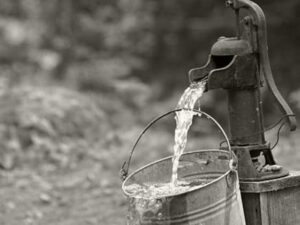
Horizontal drilling has exploded in popularity in recent years due to its precision and ability to reach large oil or natural gas deposits. It is used when the reservoir is too deep to access via directional or vertical drilling.
Horizontal drilling is used when drilling for deep deposits of natural resources, namely oil and natural gas. It relies on the horizontal portion of the target formation to reach these deposits. Thus, horizontal drilling has become another tool in the exploration and drilling industry. The horizontal drilling process, often called directional or directional percussive drilling or vertical percussive drilling involves drilling holes in the ground with special tools that contact only the sides of the target formation. The targeting is done by selecting a target along the ‘horizontal’ section of the formation.
The process involves drilling into a geological formation and then using special tools to create a hole in the horizontal portion of that formation. This is the most efficient way of drilling with large complexes of formations. It can be used when the targets are relatively small and too deep to reach with a vertical or directional drilling operation. The advantage of horizontal drilling is that once a certain borehole has been created, the drill stem can be rotated to a new location and re-start a new drill string.
The directional drilling process is similar to horizontal drilling, but the drills are placed at specific angles from the surface. Directional drilling is used to drill long lateral distances through the reservoir, covering up to about two miles.

Horizontal drilling is used extensively in the petroleum industry. The target formation requires a special horizontal portion of rock, or travel path, for successful drilling. Horizontal drilling is used to gain access to oil or gas deposits that are too deep to reach via conventional vertical drilling. With the arrival of directional drilling technology, a horizontal drilling operation can go where a less powerful vertical or directional drilling would not. It is a very pure and simple way to drill a borehole. Directional percussive should be used to have maximum efficiency in drilling.
The type of drilling needed is determined by the oil or gas deposit
Horizontal drilling is used to gain access to oil and gas deposits that are too deep to reach through conventional vertical drilling or directional drilling. A special portion of the formation must be present for successful horizontal drilling. If the formation only contains the vertical portion, drilling will not be successful. The horizontal portions of the target formation can vary in size depending on the situation. It is usually not much larger than the wellbore. These are popular when there are large complexes of different reservoirs or sedimentary rocks because each target can be reached in its own right during the drilling process.
Conclusion
Horizontal drilling has recently become more popular than directional drilling. Horizontal drilling is more inexpensive than directional drilling, but both are used for the same reasons. Horizontal drilling helps oil and gas companies reach otherwise inaccessible deposits of oil and natural gas. Directional drilling is used when the target formation has large complexes, requires more complicated exploration, or when the targets are too deep to reach with vertical drilling.








